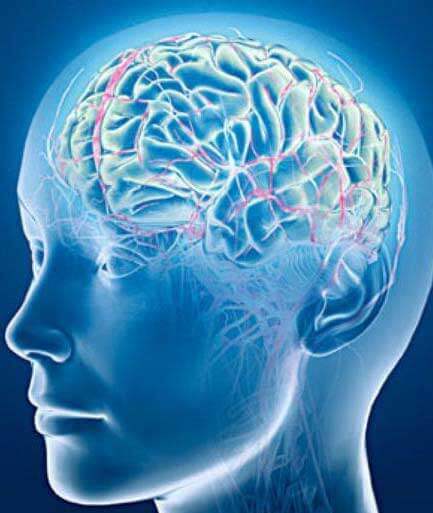Led by a team of internationally recognized experts in trauma, addictions, and mental health, our Integrated Addictions Model will be implemented through a variety of treatment modalities; individual psychotherapy and group therapies including experiential, didactic, and cognitive therapies. Our team of experts works collaboratively- employing these modalities to provide an intensive and dynamic approach that incorporates functional healing treatments to foster mental, emotional, physical, occupational, and spiritual integration for our clients. We offer individual and group therapy. The therapy and modalities offered to clients at Healing Springs Ranch are customized to suit each client’s individual needs as determined by the staff and programs in pain at the time of treatment. Not all treatments and programs are suitable or available to all clients. Variations in programs and treatments do occur and Healing Springs Ranch has the sole discretion to determine what therapy and programs are offered to each client.
Group Therapy
The benefit of group therapy has been documented and proven to be a highly effective treatment modality. Unexpressed feelings are the root driver to most, if not all, mental health and addictive patterns. Sharing thoughts and feelings in a safe and supportive environment is an important part of group therapy and strongly affects treatment success. The climate of trust provided by the group promotes an environment where members feel safe to share their struggles and work collaboratively to understand one another. As individuals increases in self- awareness, they develop new ways of relating to people and learn new adaptive behaviors. This also promotes progress towards their personal goals that brought them to treatment.


Art Therapy
This is a facilitator-led experiential group. The registered art therapist will begin by providing an art therapy assignment. Participants are encouraged to create an expression of that assignment. This is a “process” oriented group as opposed to a “product’” oriented group. In other words, the therapeutic benefit comes from the “process” of the creating and not the “product” or end result of the creation process. The goals of this activity are to provide a creative expression of emotional energy, concertize concepts, provide a safe outlet for non-verbal expression, work though developmental obstacles, and provide a pictorial testimony. This is a 2-hour group process. The first hour is used for the creative expression and the second hour is used for the group process and sharing of the activity and associated experiences.
Anger Management
This is a facilitator-led experiential group. In this group, clients are allowed the opportunity to practice expressing anger in a healthy manner. It offers an opportunity for the facilitator to observe where clients have stored/suppressed emotions in their bodies. Clients learn to identify where they are emotionally “congested” and how to emotionally counterbalance. It is a very physical exercise that enables the “rager” to connect to sadness and vulnerability, and conversely, for the depressed client to tap into the healing energy of healthy anger. This is a VERY powerful group process where clients actually “practice” active release of untapped emotions rather than merely discussing “anger management techniques.” Due to the potential emotions tapped into this group, it is facilitated by a highly skilled facilitator.
Psychodrama
This is a facilitator-led experiential group. This group allows clients to use spontaneous dramatization, role-playing, and dramatic self-presentation to investigate and gain insight into their lives. Through the re-enactment, clients can recreate real-life situations, and act them out in the present as an opportunity to evaluate their behavior. Quite often, past experiences in which the person was in the victim role, are re-enacted from a new position of empowerment. This shift in power often allows a client to release “residual energy” from the past that has been unresolved for many years. There is a volunteer who wishes to work on a specific issue with other group members being therapeutic agents in the dramatization. It is a form of individual therapy that is executed within a group.
Core Curriculum
This is a facilitator-led educational class. It is every morning, Monday through Saturday. This group is led by our senior staff and teaches curriculum from our Integrated Addiction Model™. This class addresses the commonalities seen in all addictions, mental health issues, and trauma-related symptomology. The group objective is to identify the underlying issues beneath all mental health and addictive patterns, thus reducing future “addiction substitution” and/or mental health symptoms and diagnoses. It is critical in understanding the inter-connectivity of all compulsive and self-destructive patterns; past, present, and future.
Yoga
This is a facilitator-led experiential group in which clients learn how to be more connected to their body by promoting grounding opportunities that encourage mindfulness, discipline, reflection, and awareness. Since all addicts have unresolved emotional pain, this technique provides active release at a physical level. Recent clinical studies have shown how yoga promotes health including improving chronic pain, reducing stress, lowering heart rate and blood pressure, relieving anxiety, depression, insomnia, and lowering cortisol levels.

Individual Therapy

What Is Emotional Transformation Therapy®(ETT®)
Emotional Transformation Therapy® (ETT®) is an “attachment-based” form of interpersonal therapy whose outcomes are substantially amplified by precise visual brain stimulation.
- The term “emotional transformation” is used because it frequently alleviates emotional distress in minutes and often produces positive states as a result.
- “Attachment-based” refers to the fact that each person has characteristic patterns of regulating emotions and relationships that developed in early bonding. When attachment patterns are deficient, it makes people more susceptible to emotional distress. By adapting interpersonal responses that are individualized to each person in counseling, the basic attachment deficiency source can be changed to promote long-term changes.
“Precise Visual Brain Stimulation”
“Precise visual brain stimulation” refers to the idea that when light enters the eyes, it is converted into neural impulses that travel throughout the brain where it impacts, not only the vision, but also brain mechanisms that control emotions, thoughts, physiology, and spiritual states. By using precise wavelengths of light (color) during interpersonal processes, the exact parts of the brain responsible for disturbances can be impacted. This makes it possible to achieve rapid outcomes for alleviating psychological and physical distress.
The ETT® method is now used by hundreds of therapists in the U.S. and Europe. Its process is supported by scientific research documented in the book Emotional Transformation Therapy. This method has specific treatment procedures that produce rapid outcomes for the following conditions:
- Rapid Trauma Recovery-Acute Trauma and PTSD
- Depression
- Anxiety Disorders
- Addiction-both substance and behavioral addictions
- Couple Therapy
- Spiritual and Religious Issues
- Somatic Psychotherapy-chronic physical pain, accident recovery and the stress component of illness
- Obsessive-Compulsive Disorder
- Sleep Disorders
- Adult ADD and ADHD
- Some types of brain injury
- Bipolar Disorder
An advantage of ETT®
These unusual accomplishments usually take place by the innovative method of Emotional Transformation Therapy® (ETT), that originated. ETT® is an interpersonal method whose outcomes are amplified by the use of precise visual brain stimulation. Observations have shown that relief of depression, anxiety, and trauma usually occurs faster than the use of most medications, but without the side-effects, dependency, or long-term need. However, it usually works even when a person is taking medication and ETT® offers a means to eventually get off medication if desired. ETT® works even better if the person is not on medications and wants a proficient, natural means toward recovery.
An advantage of ETT® over most talk therapies is that many conditions like trauma and addictions operate in parts of the brain that are not conscious and are largely inaccessible by conscious verbal means. ETT® possesses the capacity to access underlying drives, motives, trauma, and emotions that produce unwanted symptoms and then can change them. ETT® is an experiential form of therapy that works best when the clients allow themselves to participate emotionally in the process.
Be forewarned that change can take place rapidly and to a greater magnitude than most people imagine to be possible. Therefore, it may exceed preconceived ideas of what is possible. Comments such as “I can’t believe it”; “Will it last?”; or “How can this change be possible?” are not uncommon and required adaptation.
